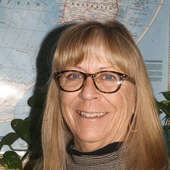- Research tips and McCook Brick Company- solid as a brick (12/16/24)
- Big Give appreciation and some railroad characters (11/15/24)
- George Randel becomes a landowner, gets married, and takes in a Buffalo Bill show (9/20/24)
- The memoirs of George F. Randel, early settler of Red Willow County (9/12/24)
- Vietnam War Memorial honors Nebraskans who served (6/13/24)
- McCook business promotions - just prior to 1893 stock market crash (5/30/24)
- Shall we dance? Meet you at the Gayway (12/8/23)
Websites to use for Irish genealogy
Friday, December 11, 2015
I sent my DNA sample off last week. So, in six weeks or so I will possibly have additional proof of my Irish heritage. Regardless, since I have indisputable proof of two direct Irish descendants, the following websites are very useful.
Before Ellis Island, the first immigration center in America was at Castle Clinton (or Castle Garden) located in the Battery Park at the southern tip of Manhattan in New York City. Opening in 1855, over eight million immigrants were processed through the center before it closed in 1890. Now a National Park, you can access their free website at: www.castlegarden.org. The records available can cover arrivals in New York from 1820 up to 1913.
On Jan, 1, 1892, 17 year old Annie Moore, an Irish immigrant from County Cork, was the first person processed at the new Ellis Island immigration center. Seven hundred people followed her that day and before the immigration laws were changed in 1924 so that immigrants were processed in their own countries at the American consulate prior to leaving for the United States; over 12 million people came through the gates of Ellis Island. To search their data base, which covers up to 1924, go to www.ellisisland.org.
Boston College has amassed a collection of nearly 100,000 Irish names from approximately 40,000 advertisements printed in the Boston Pilot section called "Missing Friends." Covering the years between 1831 and 1921, these queries looking for lost relatives or friends can have varied information from the county and parish of the missing person's birth, their departure from Ireland, occupation, etc. Even if you aren't genealogically inclined, these ads tug at the heart of even the most stalwart historian. Sponsored by Boston College's Irish Studies Program, they even have a link for advanced searches or help. Go to: www.infowanted.bc.edu.
If your Irish ancestor was a late arrival to the United States, he/she might be searchable in the 1901 or 1911 Irish census. Those records are digitized and available to research for free on the National Archives of Ireland. Other searchable bases include Tithe Appointment Books and Wills at www.genealogy.nationalarchives.ie.
You might remember my article on the Ulster Scotts. While most of www.ancestryireland.com is a pay-for-view site, one portion, Matheson's Distribution of Surnames in Ireland in 1890, is free. At the very least, you can place by region where your ancestor's surname was most common. Go to the site and then search for Distribution of Surnames. The four divisions listed are: Ulster, Connaught, Leinster, and Munster. When I type in Davison, my results show Ulster as the most common area and principally in Antrim.
The Irish Newspaper Archives (www.irishnewsarchive.com) has offerings from as early as The Freeman's Journal (1763 to 1924). Searching this site is free but if you find an article you wish to print, there will be a fee attached. Be as specific as possible with your search query. When I put just "Coady" in the search box, my results were overwhelming until I realized there was a race horse in Ireland named Coady and I was getting the statistics of every race the horse was in.
We had a wonderful Christmas celebration at the Southwest Nebraska Genealogy Society library last Saturday and two walk-in visitors found exactly what they were looking for with the help of our research members. Remember, if you want to search our library and are visiting from out of town, contact us at www.swngs.org to set up an appointment or message us on our Facebook page: Southwest Nebraska Genealogy Society.

